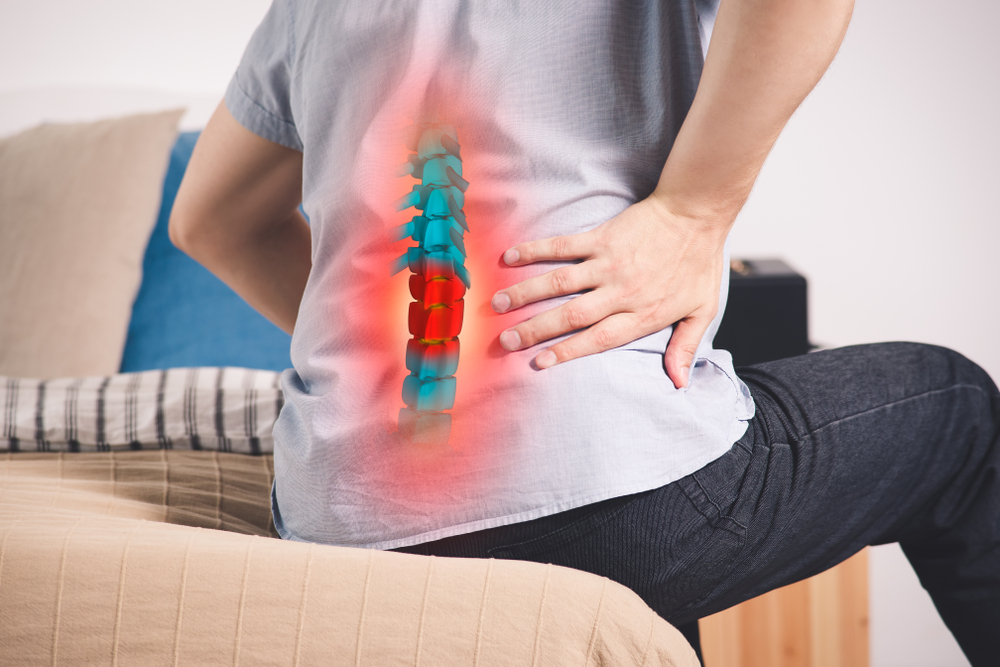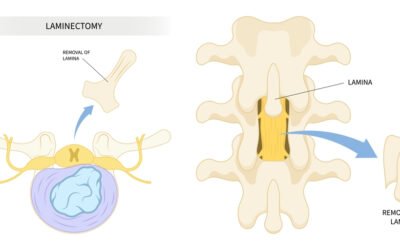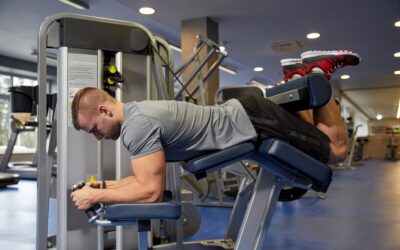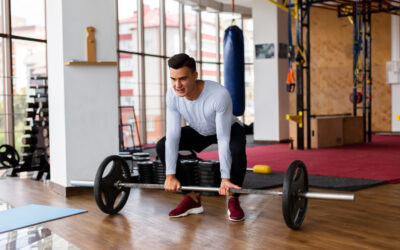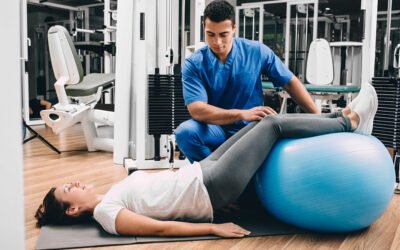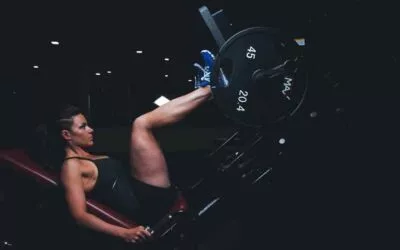Lumbar Spondylosis also called spondylolisthesis or spondylosis deformans is a degenerative disease that causes the spinal vertebrae to slip out of place and can result in severe back pain. As this condition progresses, it becomes more difficult to find exercises that can sufficiently ease your pain. Fortunately, there are many exercises that you can do to help relieve your symptoms and prevent the progression of lumbar spondylosis. 13 best lumbar spondylosis exercises are listed below.
What is Lumbar Spondylosis?

Lumbar spondylosis is a degenerative condition that affects the lower back region. It is caused by age-related wear and tear of the vertebrae, discs, and other structures in the spine.
Causes of Lumbar Spondylosis.
Lumbar Spondylosis is a degenerative disorder that affects the vertebrae in the lower spine. It can cause pain and discomfort in the lower back, as well as other areas of the body.
Symptoms of Lumbar Spondylosis.
This can lead to narrowing of the spinal canal, compression of the spinal nerve roots, pain, stiffness, and decreased mobility. To reduce the symptoms of lumbar spondylosis, it is important to do regular exercise that focuses on strengthening the lumbar area and improving flexibility.
13 Best Lumbar Spondylosis Exercises.
Here are 13 best lumbar spondylosis exercises that can help to relieve back pain and improve spinal health;
1. Knee Lift.
Purpose: Stabilize lumbar spine & strengthen core.

How To Do Knee Lift?
- At first lie on your back with your knees bent and legs flat on the floor.
- Start by doing pelvic tilt. Engage your abdominal muscles and push your belly downwards. It is important to maintain this contraction in your stomach throughout the exercise.
- Raise your right leg 3 to 4 inches above the floor. Then gently lower your foot to the floor.
- Repeat with your left leg.
- Do this 5 times and up to 3 sets on each leg.
2. Pelvic Tilt.
Purpose: Strengthen lower core muscles and stretch your lumbar spine.
How To Do Pelvic Tilt?
- At first lie on your back.
- As you exhale, contract and engage your abdominal muscles, push your belly toward the floor, and level your lower back.
- Hold this position for 5 seconds. Relax.
- Repeat 10 times, pause for 5 seconds each time.
- To find out your posture is correct or not, use hand, place your pinky finger on your hip bone and thumb on your lowest rib.
- As you squeeze your belly, the space between your pinky and thumb should be reduced.
3. Curl-Up.
Purpose: Strengthen and stabilize your core.
How To Do Curl-Up?
- Lie on your back in the hook lying position (knees bent and feet resting on the floor).
- Place your hands and arms across your chest.
- Slowly lift your head, neck, upper back and shoulders off the floor.
- As soon as you get up, exhale. As soon as you come down, breathe in.
- Repeat 10 times and do 3 sets.
Advance Level : For more challenge Instead of putting your hands across your chest, place your hands with elbows on the back of your head. Lift gently (make sure your neck doesn’t stretch) and lower 10 times, working for 3 sets.
4. Lumbar Spine Extension.
Purpose : Strengthen your core.
How to do Lumbar Spine Extension?
- Lie on your stomach with the palms of your hands next to your shoulders.
- Straighten your arms while keeping your hips on the floor so that your back is arched. As far as you can comfortably, push backwards.
- Pause for 5 seconds and slowly return to the starting position.
- If you’re not able to lie on your stomach, place your hands on your lower back and lean back as comfortably as you can.
- Pause for 5 seconds and slowly return to the starting position.
- Repeat 10 times and do 2 sets.
5. Lumbar Spine Flexion.
Purpose : Stretch your lumbar spine.
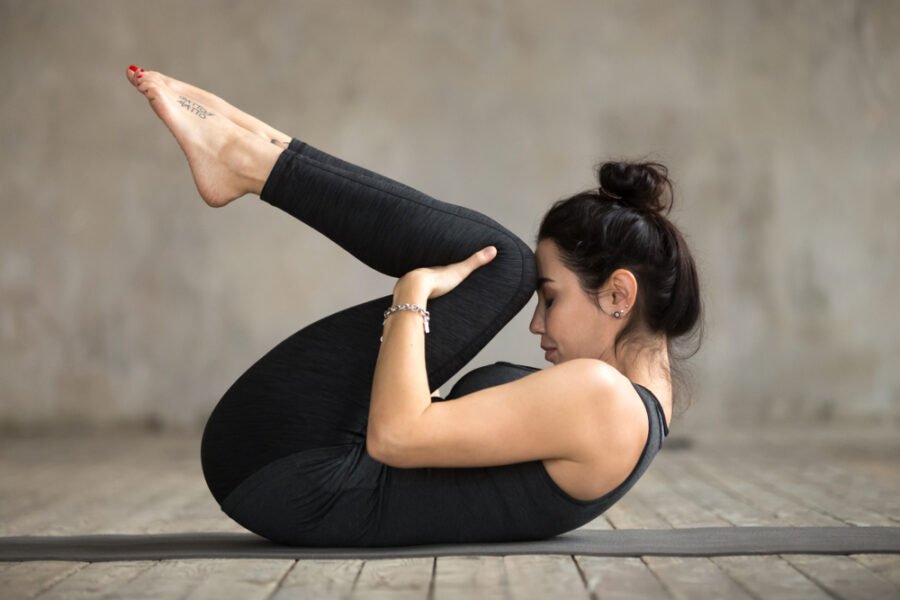
How to do Lumbar Spine Flexion?
- At first lie down on your back and slowly bring your knee up to your chest.
- Place both hands on the knee and gently pull your knee close to your chest until you feel tightness.
- Stay in this position for minimum 30 seconds and then slowly return to the starting position.
- Repeat the exercise with your opposite knee.
- Practice for 10 times and do 3 sets.
6. Bridging.
Purpose: Provide strength to the spine.
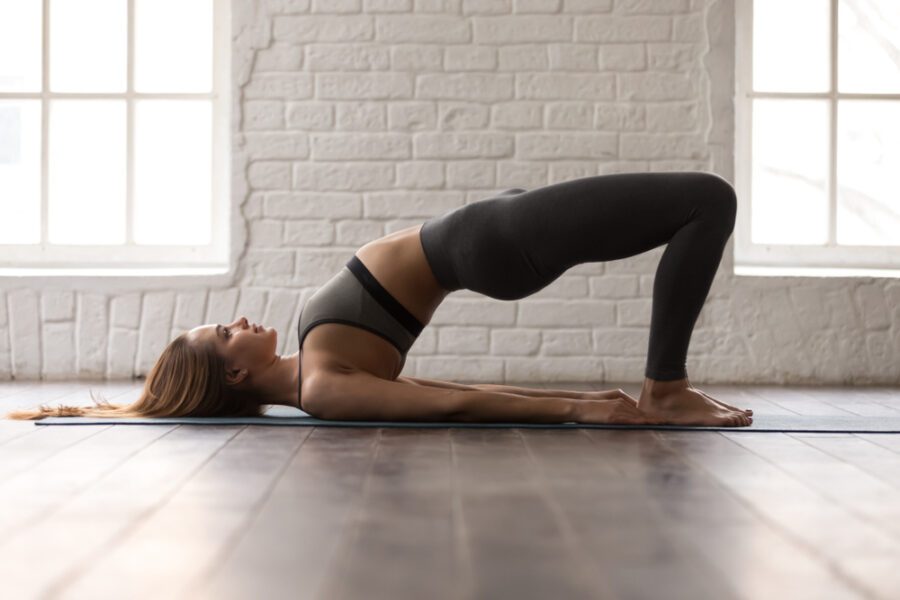
How to do Bridging?
- Lie on your back with your knees bent and legs flat on the bed.
- Slowly lift your hips off the bed as much as you can comfortably.
- Pause for 5 seconds and slowly return back to the starting position.
- Make sure the head and neck are kept straight to avoid stress on the neck joints.
- Practice for 10 times and do 3 sets.
7. Lumbar Spine Rotation.
Purpose: Improve flexibility to lumbar spine.
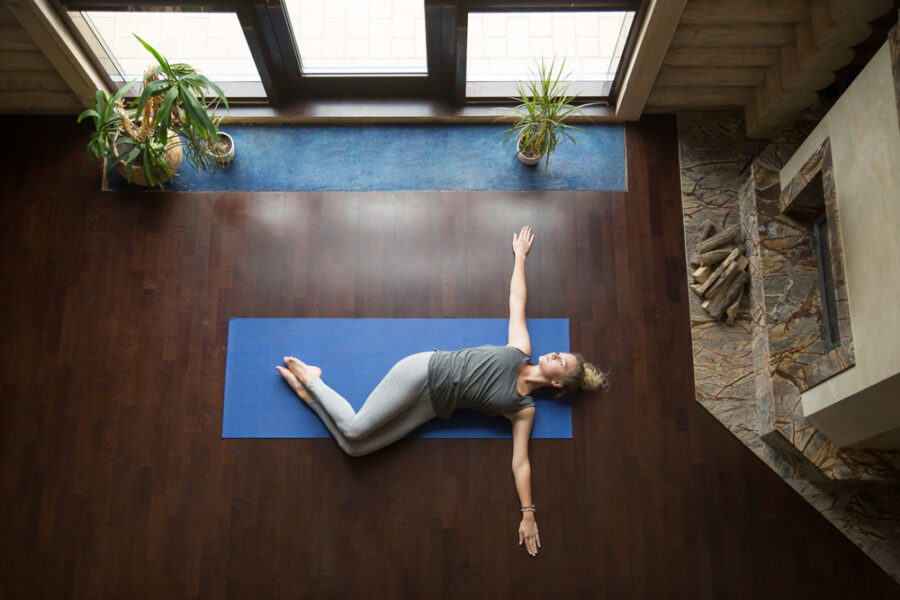
How to do Lumbar Spine Rotation?
- Lie on your back with both knees bent and your legs flat.
- Roll them to the left while keeping your knees together as comfortable as possible and then go back as far as you can to the right.
- Return to the starting position in a spontaneous movement.
- Practice it for 10 times and do 3 sets.
8. Forward Bends.
Purpose : Stretch the spine, helping to alleviate tension and pressure in the lower back area also help to increase mobility in the spine.
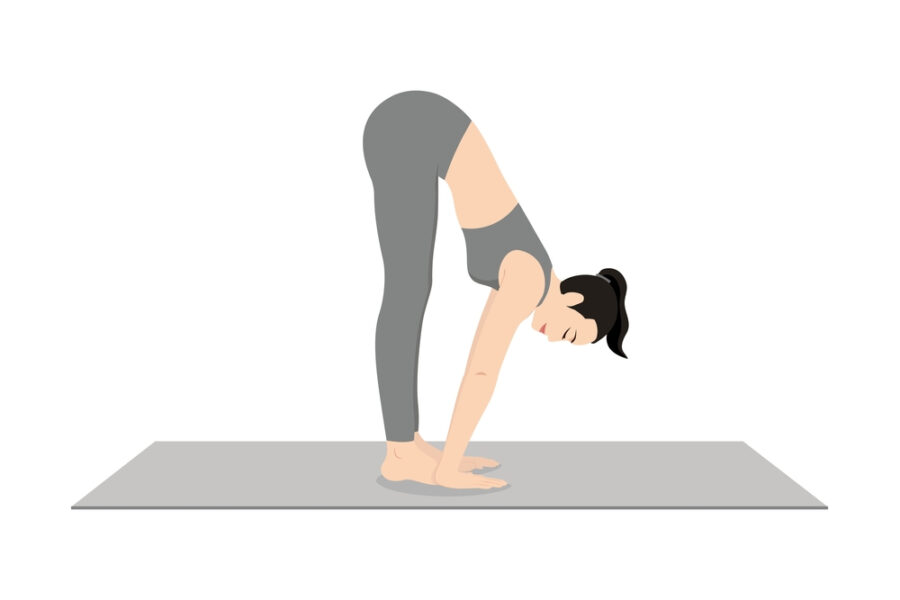
How to do Forward Bends?
- To do a forward bend, stand with your feet hip-width apart and your hands on your hips.
- Gently hinge forward at the hips and let your torso fold over your legs until you feel a gentle stretch in your lower back.
- Hold the position for 10–15 seconds and release.
- Repeat this exercise 3–5 times.
| Footnote. Be sure to keep your back straight as you hinge forward, and do not force the stretch past a comfortable level. When done correctly, forward bends are a great way to help reduce back pain associated with spondylosis. |
9. Hamstring Stretches.
Purpose : Help to reduce pain and stiffness in the lower back.(1)
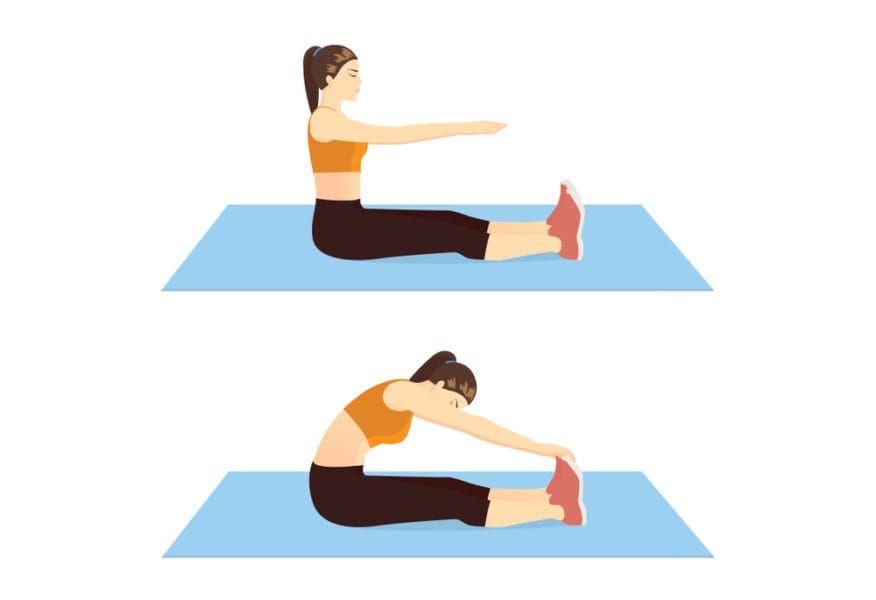
How to do Hamstring Stretches?
- To start, sit on the floor with both legs straight out in front of you.
- Reach forward and hold onto your toes, pulling them toward your body as much as you can.
- Hold this position for about 10 seconds, then release.
- You can repeat this as many times as necessary to get a good stretch.
- This exercise can be done daily to help reduce discomfort from spondylosis in the lower back.
10. Pilates.
Purpose : It focuses on improving core strength and overall flexibility, both of which can be beneficial in reducing back pain.(2)
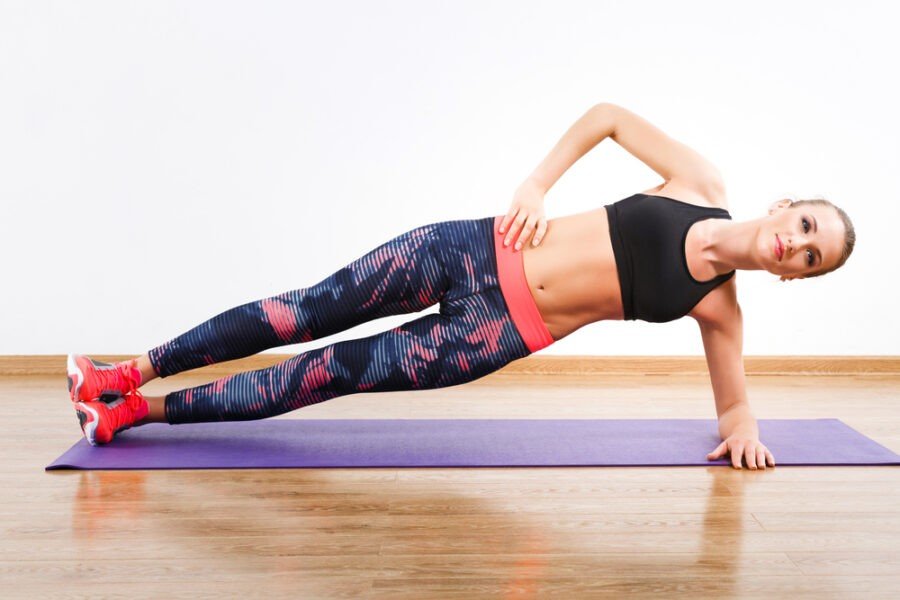
Some of the best lumbar spondylosis exercises that can be done using Pilates include the single-leg stretch, single leg circles, and side planks.
These exercises target key areas that are important in managing back pain, such as the abdominal muscles, lower back muscles, and hip flexors.
Additionally, these exercises are designed to improve posture and spinal alignment, which is essential in preventing further injuries or discomfort due to lumbar spondylosis pain.
*Note. It’s important to remember to always consult with a healthcare professional before start any exercise program to ensure that it is safe for you to do so.
11. Exercise Balls.
Purpose : Improve balance and stability, as well as strengthening and stretching muscles.
Exercise balls, or stability balls, are a great way to incorporate lumbar spondylosis exercises into your workout routine.
They can be used for exercises such as crunches, bridges, planks, and more. These exercises can help strengthen the lumbar muscles and improve flexibility, which can help reduce back pain caused by spondylosis.
If you’re just starting out with exercise balls, make sure to begin slowly and progress as you become more comfortable with the movements. Here are some of the best lumbar spondylosis exercises to do with an exercise ball mentioned above in the video.
12. Walking.
Purpose : Helps to stretch and strengthen the muscles of the lower back, as well as promote overall mobility and flexibility.(3)
Walking is a great lumbar spondylosis exercise for those suffering from lower back pain. Walking is an activity that can be done virtually anywhere and can be done at any pace.
All you need is a comfortable pair of shoes and you are good to go. Start slow and gradually increase the distance and intensity of your walks.
13. Tai Chi.
Purpose : Effective to improve posture and helping to strengthen the muscles in the back and abdomen.(4)
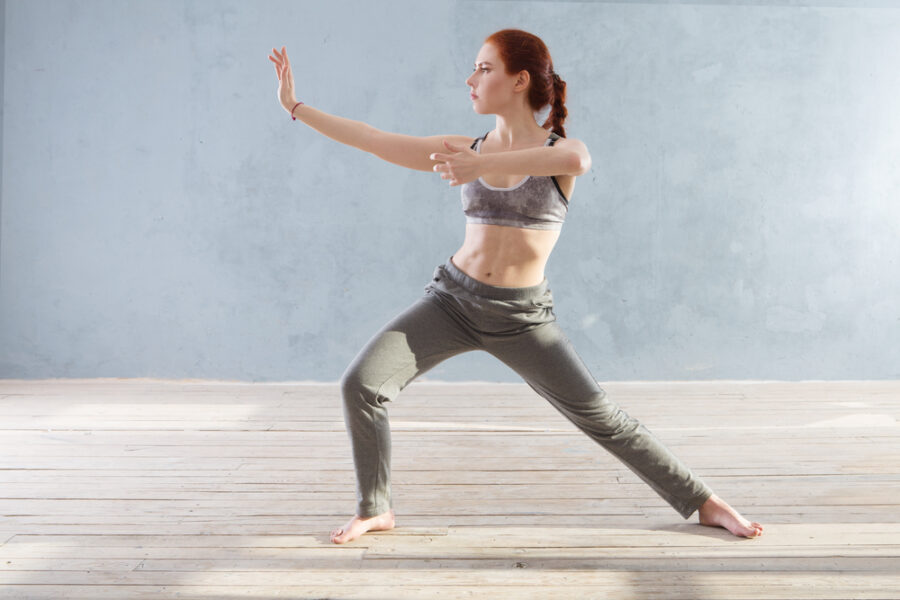
Tai Chi is a type of lumbar spondylosis exercise that is popularly used to relieve back pain and improve posture.
This ancient Chinese practice consists of a series of gentle, flowing movements that can help to relax the body and mind while also helping to strengthen the muscles in the back and abdomen.
The movements are easy to learn and can be done at home or in a class setting. Practicing Tai Chi regularly may help to reduce pain and stiffness associated with spondylosis, improve flexibility and range of motion, and increase balance and coordination.
It can also be a great way to relax and de-stress, as well as an effective tool for managing chronic pain.
exercises to avoid in lumbar spondylosis.
- Avoid exercises that involve excessive bending or bending the spinal cord.
- Avoid exercises that put excessive pressure on the lower back, such as lifting heavy weights or full wake-up-sitting.
- Avoid exercises that involve sudden or jerky motions.
- Avoid exercise that causes pain or discomfort. If an exercise is causing pain, stop exercising immediately and consult a doctor.
physiotherapy exercises for lumbar spondylosis.
Management of Acute Symptoms.
1. Rest and Support.

With acute joint symptoms, a lumbar corset inflamed aspect can be helpful in providing comfort to the joints. When acute symptoms subside, discontinue corset by gradually increasing the time without corset.
2. Asana.
The head, neck and shoulders should be placed comfortably behind the chair by placing a small pillow in the spine, supporting the legs and keeping the arms on the arms or on the pillow in the lap.
3. Traction.
Gentle intermittent joint distraction and gliding techniques can prevent painful muscle reactions and provide synovial fluid movement within the joint for healing.
4. Modalities.
Hot or cold packs on the affected area, ultrasound and electrical stimulation are some of the other treatments that are used to reduce pain and reduce muscle spasms.
5. Relaxation.
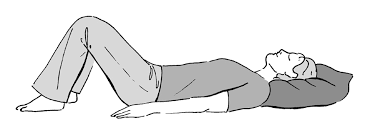
By soft techniques such as deep breathing exercises and physical relaxation (Laura Mitchell method) and hydrotherapy.
Management of Subacute And Chronic Phases.
- Stretching exercises.
- Increase ROM- free active exercise of the lumbar spine.
- Posture improvement.
- Mobilization – restoration of interstitial mobility by accessory pressure enables the patient to achieve full functional painless motion.
Home remedy for lumbar spondylosis.
1. Heat Therapy.
It is the most common home remedy for lumbar spondylosis that can be used to relieve back pain. Heat therapy, or thermotherapy, involves applying heat to the area of discomfort for a period of time to increase blood flow and reduce muscle tension.
2. Ice Therapy.
Ice therapy, or cryotherapy, is the opposite, as it involves applying cold to the affected area to reduce inflammation and pain. Both heat and ice can help to relax tight muscles and reduce inflammation in the affected area, offering relief from discomfort associated with lumbar spondylosis exercises.
3. Massage.
Massage can do wonders both physically and psychologically. Ask your partner or close friend for a massage for 10-15 minutes. Start comfortably, but guide them about location and pressure.
permanent cure for lumbar spondylosis.
There in no permanent cure for lumbar spondylosis. However, you can suppress the pain and prevent them from not getting worse by following few home remedies and exercises like:
- Ice and heat therapy.
- Stretching.
- Tai chi.
- Walking and so on.
Bottom Line.
These low back spondylosis exercises focus on strengthening your spinal support system— your back and core (abdominal) muscles. If the muscles around your spine support and stabilize your back, you may experience less pain and a healthier spine.
+4 Sources
Freaktofit has strict sourcing guidelines and relies on peer-reviewed studies, educational research institutes, and medical organizations. We avoid using tertiary references. You can learn more about how we ensure our content is accurate and up-to-date by reading our editorial policy.
- Effect of Stretching Programme of Hamstring Muscles on Low Back Pain among Surgeons (Pilot Study); https://actascientific.com/ASOR/pdf/ASOR-02-0040.pdf
- Pilates for low back pain; https://www.ncbi.nlm.nih.gov/pmc/articles/PMC8078578/
- The effect of lumbar stabilization and walking exercises on chronic low back pain; https://www.ncbi.nlm.nih.gov/pmc/articles/PMC6616307/
- Meta-Analysis of Tai Chi Chuan in Treating Lumbar Spondylosis and Back Pain; https://www.ncbi.nlm.nih.gov/pmc/articles/PMC8843943/

 Workout
Workout
 Meditation
Meditation


 Stories
Stories


 Podcast
Podcast E-book
E-book